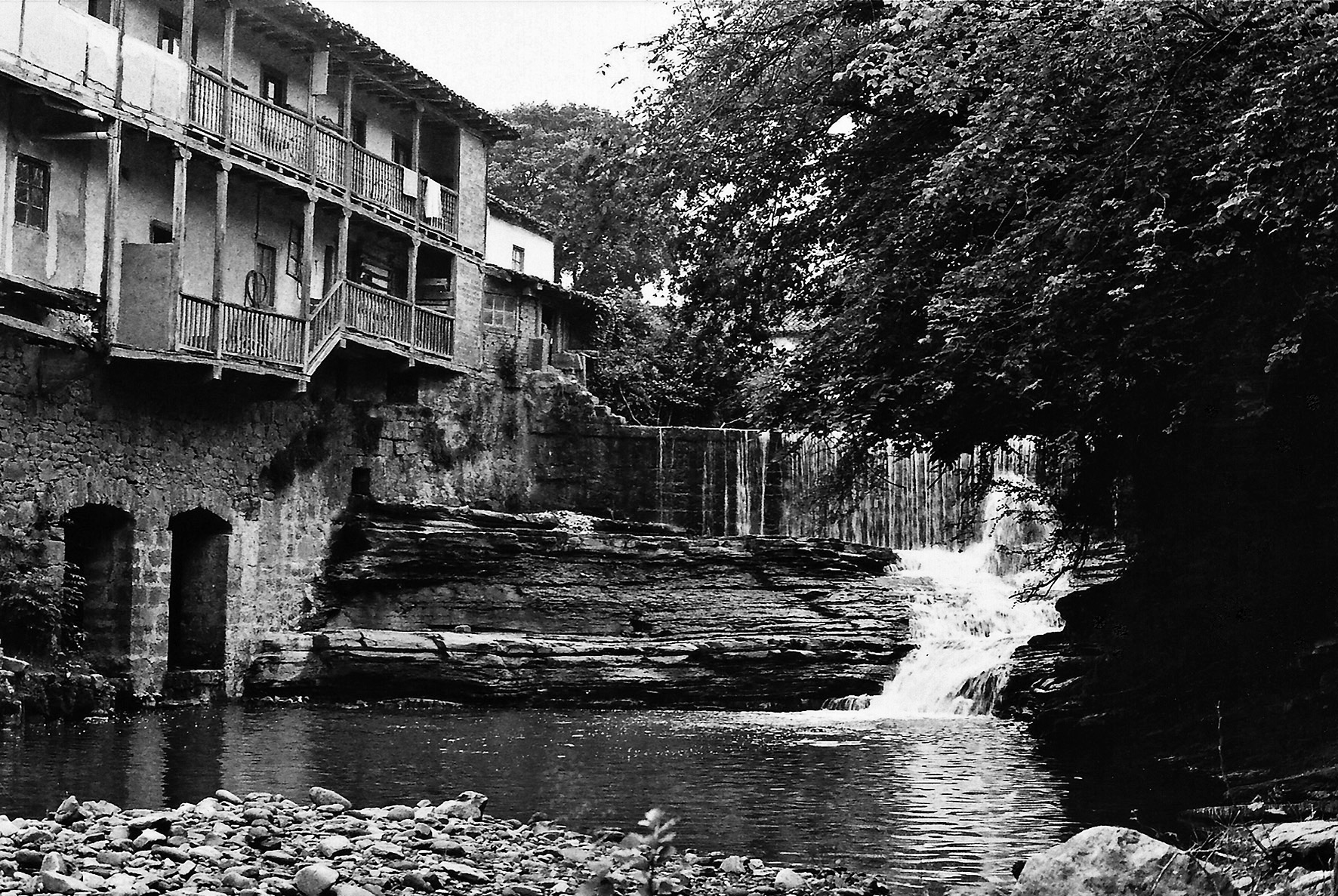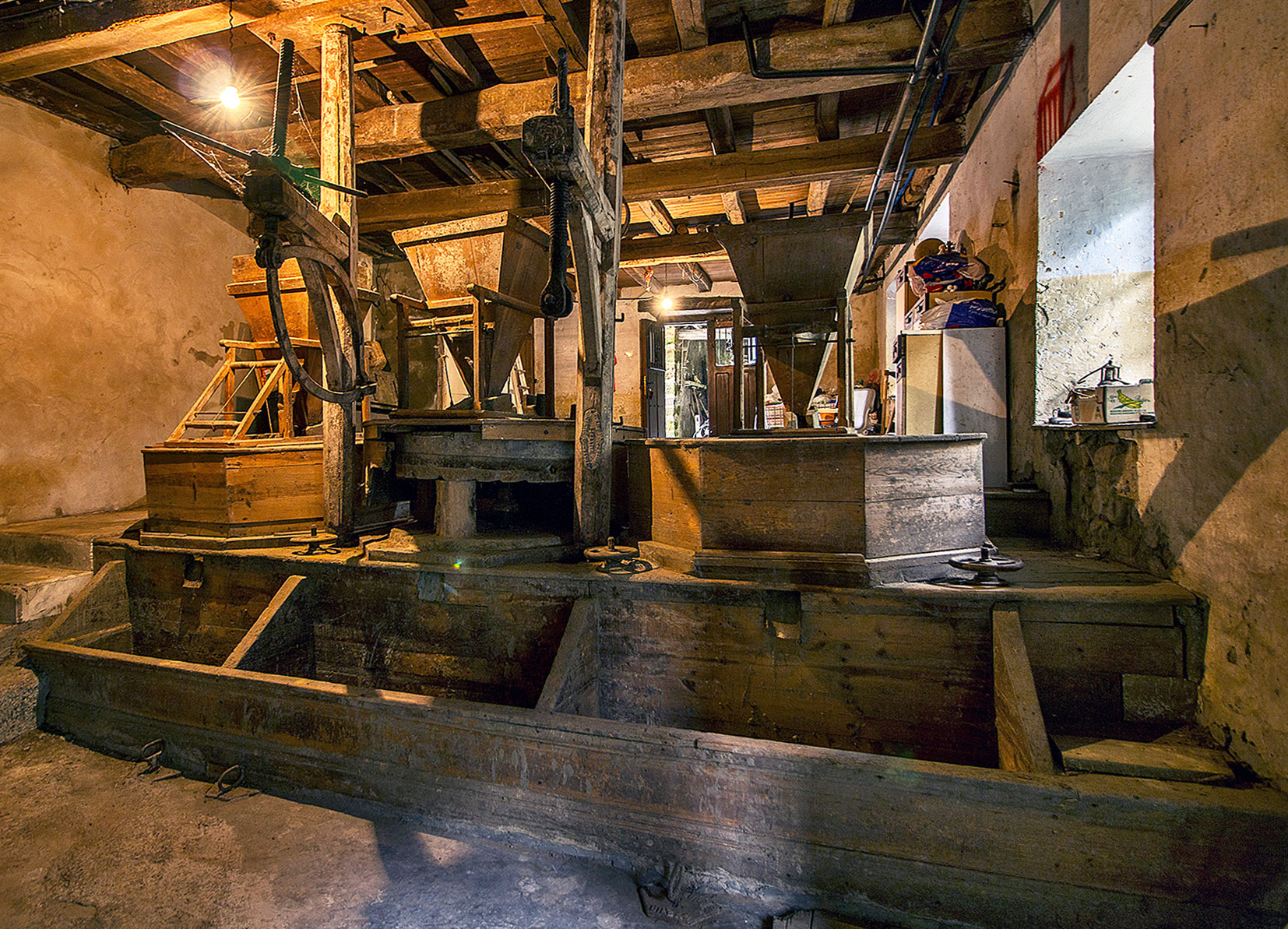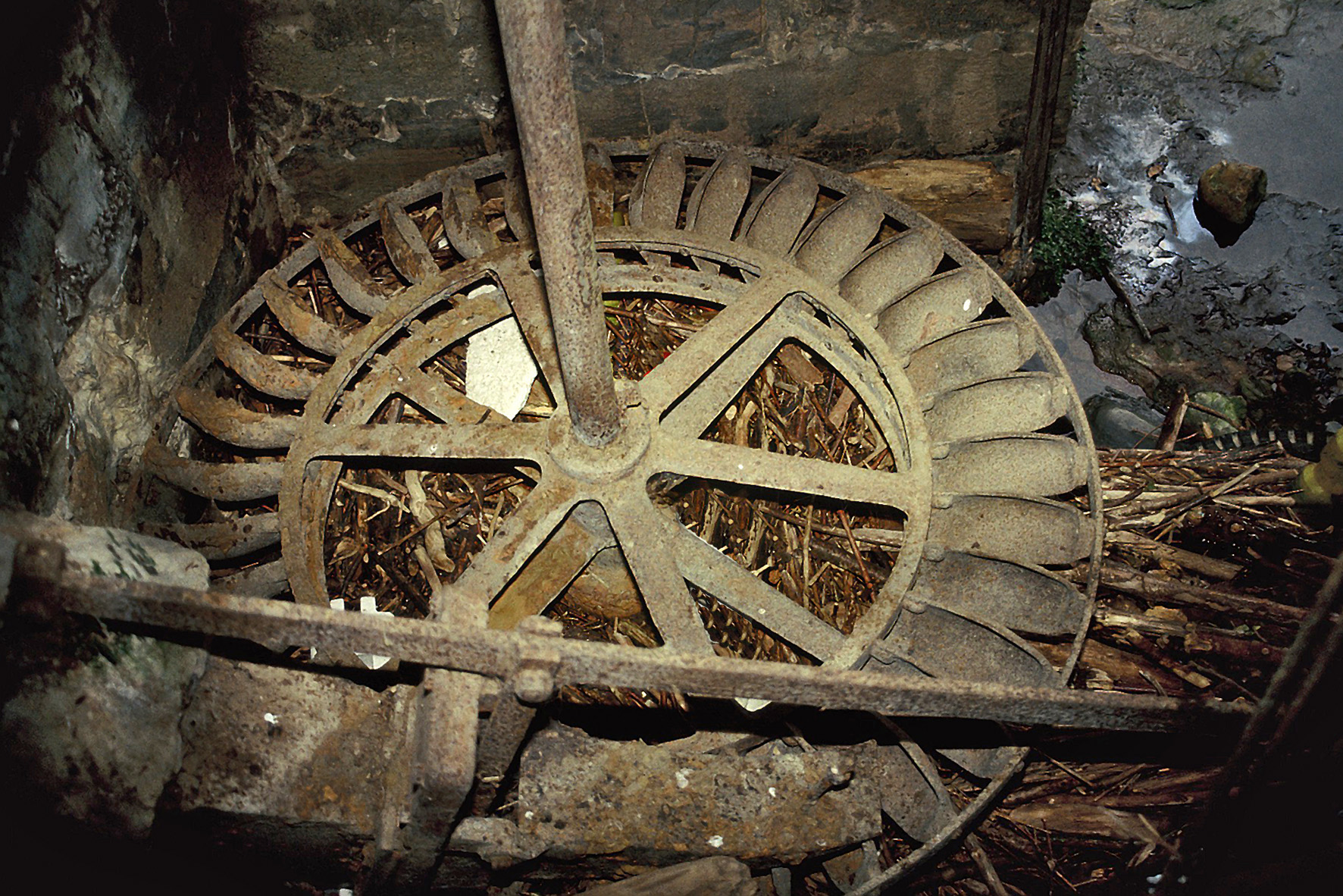Basque ethnography at a glance

Exterior view of the mill, 1977. Miguel Sabino Díaz.
It is a grain watermill situated in the homonymous site, on the right bank of the river known by locals as El Cuadro, and beneath the bridge across the road to the neighbourhood of Manzaneda de Sierra. The plant and machinery of this water-powered mill are still preserved today.
Its construction date is unknown. It appears in the hearth money rolls of 1796 under the name of Pinganillo Mill and is listed as community property in the register of houses, foundries and mills of 1799.

Milling room, 2017. Miguel Sabino Díaz.
On 13 August 1831 a great flood of the river raised the waters and caused significant damage to the mill, rendering it unusable. It was rebuilt a year later, following a complaint filed by Manuel González (surgeon), against Manuel Custodio del Campo (pharmacist) and his spouse, as largest holders, requiring them to contribute to its renovation.
Between 1882 and 1899 Antonino de las Bárcenas Sorrondegui let the mill by lease to Santiago Pardo Ortiz. In those days it was equipped with two pairs of millstones for grinding maize and wheat grain into flour. From 1907 to May 1915 the leasehold mill was operated by Juan Gutiérrez Sagastibelza.
On 26 May 1915 a flash flood hit the Valley of Carranza and devastated this and other mills. That same year José Rivera Sagastibelza bought the remains of the building from Antonino de las Bárcenas. A year later he built it again, enhancing its grinding capacity from two to three pairs of millstones. A carpenter’s workshop was located in its interior, which shared the hydropower by the mill to drive its machinery.
By 1949 the carpenter’s workshop had already fallen into disuse and the mill was remodelled, becoming from then on the habitual residence of the miller and his family. The rotating machinery of the mill —the majority of its parts were made of wood— would be replaced by modern iron parts manufactured by Talleres Eustaquio in Bilbao.

Spout and tub wheel, 1985. Miguel Sabino Díaz.
Water from the river flowed over a stone arch-gravity dam into a deposit under the milling room. The 7.5-metre-high waterfall provided a natural source of power for the mill. Turned by the force of water striking their vanes, the tub wheels generated an average output of 3 to 4 hp each. In drier times a wooden wheel was fitted to one of the axles and driven by means of an electric engine with a trapezoidal belt.
Francisco Rivera Ceberio operated the mill from approximately 1927 to 1968, accompanied by his father at first, and on its own or with the aid of relatives afterwards. The emergence in 1966 of the first cooperatives of dairy farmers in Carranza, which subsequently merged to form the cooperative GUVAC (Ganaderos Unidos del Valle de Carranza – United Livestock Farmers of the Valley of Carranza), brought about the permanent cessation of all activity in the mill. The mentioned cooperatives used diesel mills for the milling of grain and production of animal feed.
Miguel Sabino Díaz – Etniker Bizkaia – Etniker Euskalerria Groups
Translated by Jaione Bilbao – Ethnography Department – Labayru Fundazioa

